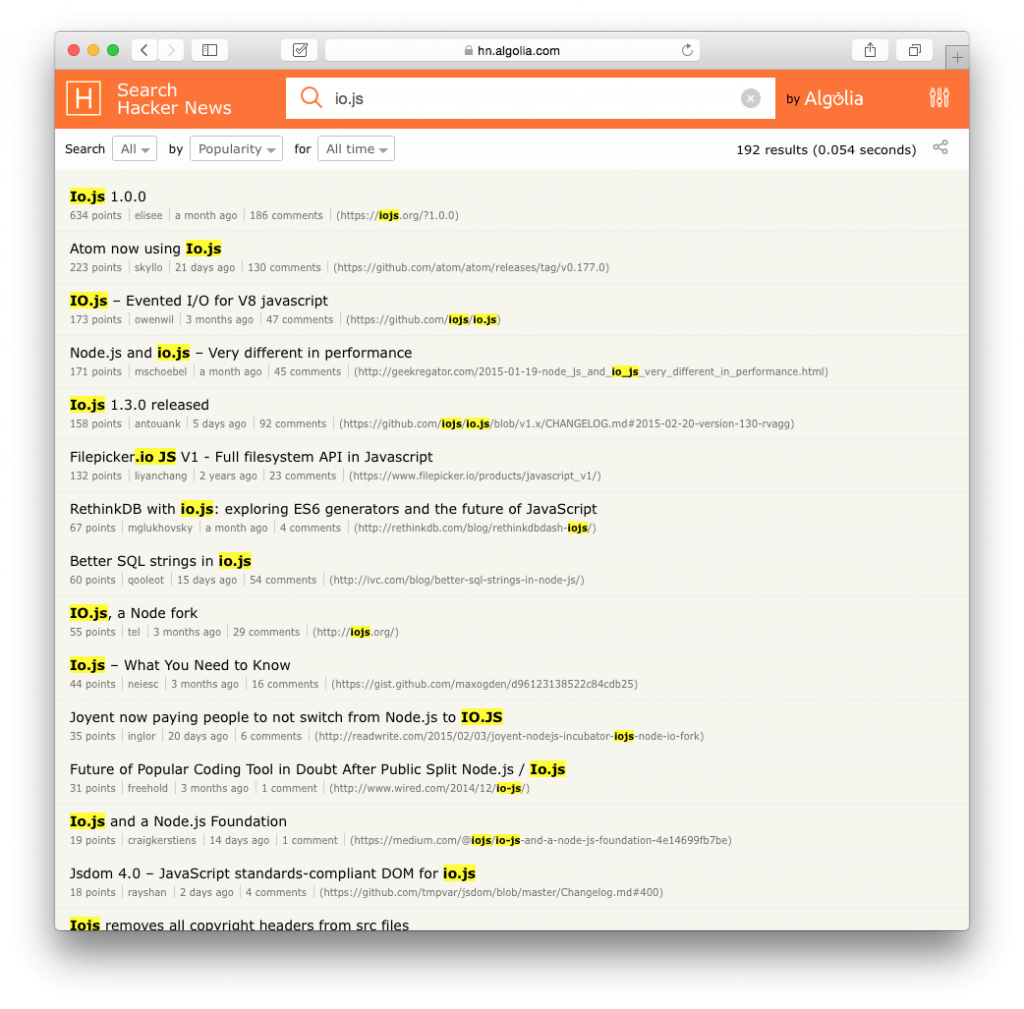
Node.js vs io.js
Here at PINT, we use Node.js not only to power some of our own internal apps, but for the apps we develop for clients, as well. In recent months, there has been a lot of buzz surrounding the new kid on the block: io.js.
What’s up with Node.js?

io.js is a fork of Node.js with the goal of an Open Governance Model. This stands in contrast to Joyent’s control over Node.js. Joyent, a cloud infrastructure organization, has done a great job in keeping a focused goal in the project. However, many argue Joyent’s stronghold hinders the fast paced development the Node community needs. The project has not even reached their v1.0 release milestone, which many attribute to being indecisive and slow to move. One of the biggest complaints against Node is the lack of urgency to update its dependencies, including its use of an older version of the V8 engine.
With much pressure from the Node.js community, Joyent established the *Node.js Advisory * back in October to:
- Try to bring more ideas to the table
- Have a committee that discusses the direction of Node.js
- Be more transparent about their decisions
While this was a step in the right direction, many in the community were still not convinced that Node.js would get the immediate attention it needed.
io.js: an alternative to Node
Enter io.js – a fork that not only is compatible with Node.js, but also looks to move fast, use the latest and greatest v8, and to be completely community driven. This isn’t a bluff either, as many of Node.js’s core contributors are heading this project.
Fast forward to today: six weeks from the initial release of io.js to the public. io.js has taken the web by storm and tons of buzz has surrounded it’s every new version release.

Joyent is in a complete scramble.
- Joyent Wants Fledgling Developers to use Node.js – And It’s willing to Pay https://readwrite.com/joyent-nodejs-incubator-iojs-node-io-fork/
With many developers looking to make the switch to io.js, Joyent seems to be trying to bring the communities back together before a schism forms. Without speculating too much on which side is winning, we can agree that io.js has given Joyent the push it needs to take the advancement of Node.js a little more seriously, and to let the developer community have a bigger say in the decisions.
JavaScript gauntlets thrown
io.js isn’t an experimental technology but one that can be used in production today. A couple major players including GitHub’s Atom Editor and NW.js (formally known as node-webkit, a native app wrapper) have recently switched over to io.js. Even heroku is getting in on the action : https://twitter.com/HunterLoftis/status/555234067520565249 .
Since we’re talking about forks of Node.js, remember JXCore? A promising multithreading fork of Node.js that not only seems to work faster but can be compiled into an executable? Neither do we, but that begs an interesting argument : Is all of this hype towards io.js a fad or a political struggle?

PINT’s stance
PINT is currently sticking with Node.js not because of politics nor a resistance to forward-thinking, but we are waiting out the storm. If Joyent is reading – real engineers are not so easily swayed by the fast paced world of web development. Those who stray down a path of uncertainty led by initial popularity will inevitably lose productivity somewhere along the way. We do encourage experimentation and open mindedness as long as a projected outcome is reasonably clear. With that being said, we are excited about the change in the JavaScript server-side community and look forward to what it will evolve into. If Joyent can’t keep their user base or possibly merge io.js back into their own, it could mean more and bigger changes for the Node community.